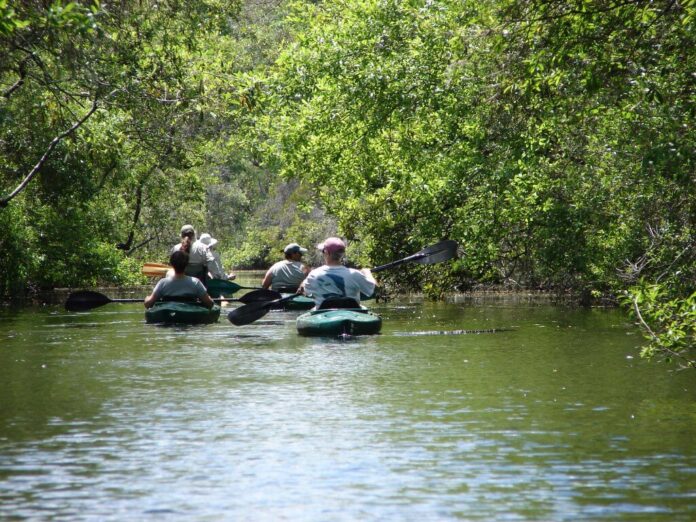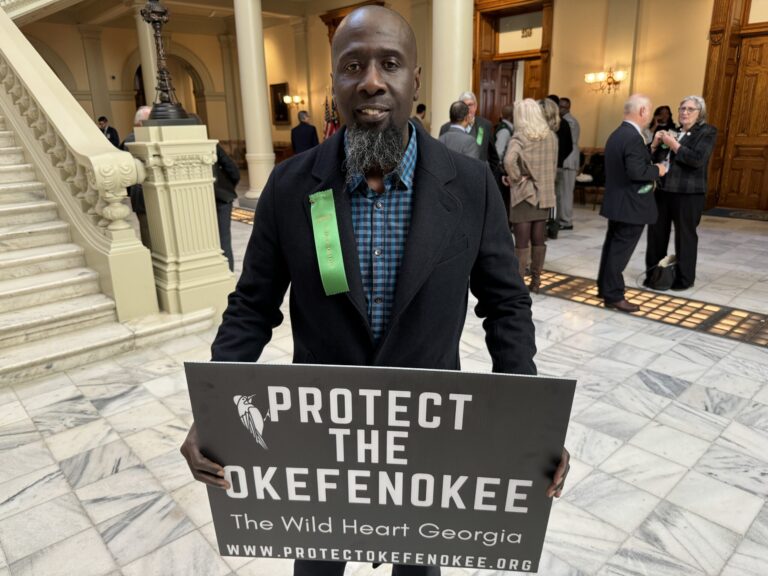
(Georgia Recorder) — A bipartisan contingent of several dozen Georgia lawmakers signed onto a pair of bills filed Thursday that are designed to protect the Okefenokee Swamp from future mining threats.
Thomasville Republican Rep. Darlene Taylor is the lead sponsor of House Bill 561, the so-called Okefenokee Protection Act that would prohibit future mining along the refuge’s Trail Ridge. Taylor and several dozen other Republican and Democratic legislators are also backing a “compromise” mining plan known as House Bill 562, which would place a five-year moratorium on surface mining permits along the Okefenokee Swamp’s Trail Ridge while experts evaluate its potential to lower water levels around the largest blackwater swamp in North America.
The fight over surface mining near the Okefenokee Wildlife Refuge has intensified since 2019 when an Alabama-based company, Twin Pines Minerals LLC, went public with its plan to mine for titanium oxide and zirconium just outside the current refuge’s boundaries.
The swamp is near the Florida line near Waycross.
RELATED Mining company vows to forge ahead when permitted
Compromise gaining traction
Opponents of the mine argue that Trail Ridge, where the mining would take place, plays a vital role in maintaining the swamp’s water levels and, therefore, supporting the refuge’s famously diverse ecosystem.
Rena Ann Peck, executive director of Georgia Rivers, said she’s optimistic about the chances of a five-year moratorium “compromise” gaining traction during this year’s session after attempts to place a temporary ban on issuing mining permits and to permanently ban future mining faltered last year in the Legislature.
“Twin Pines may get a state permit that gives them the physical license to mine 584 acres of Okefenokee Trail Ridge – but they will never receive the social license to operate at scale the thousands of acres across the rest of their mining site which lies at lower elevations closer to the swamp water level,” Peck said.
The Okefenokee mining bills’ most influential sponsors include several Republicans who represent Georgia’s coastal areas, including Savannah Rep. Ron Stephens, who chairs the Economic Development and Tourism Committee, and St. Marys Rep. Steven Sainz. The bills also have the support of dozens of Democratic legislators, including House Minority Leader Carolyn Hugley of Columbus.
“I think it’s important that we as a state tread lightly in the murky waters that come with this kind of mining development,” Sainz wrote in a text message. “Our priority must be to ensure that one of George’s top natural resource and economic assets remains protected from any undo harm indefinitely!”
Another chance
Last year’s Okefenokee Protection Act failed to get a hearing in the House’s Natural Resources and Environment Committee, while another bill that would have placed a three-year moratorium on requesting Trail Ridge surface mining permits through the Georgia Environmental Protection Division did not get a floor vote in the Senate.

Peck said that the General Assembly and Gov. Brian Kemp have another opportunity this year to protect the Okefenokee Swamp from mining. The five-year ban on EPD accepting surface mining applications and issuing permits would likely be in place during the five years that Twin Pines is seeking to mine Trail Ridge and its post-mining recovery efforts.
“Five years is justified as the time period for the demonstration mine to show some effects, but certainly not all effects, which could take 10 years or more to see what’s really happened,” Peck said. “The other piece gives time for the conservation buyer community to assemble funds to acquire those lands that are susceptible to mining on Trail Ridge or acquire conservation easements retiring mining.”
Twin Pines opposes moratorium
The U.S. Fish and Wildlife Service, which recommended a 10-year freeze on mining due to potential harm to the swamp, proposed last year to expand the Okefenokee refuge boundary by 22,000 acres if landowners choose to sell. The area added would include land owned by Twin Pines.
Twin Pines president Steve Ingle said Thursday’s legislation would not affect the company’s plans for its “demonstration mining-to-land-reclamation project.” An EPD spokesperson confirmed Thursday that the Twin Pines project is in the final permitting stage.
“We oppose any moratorium, and the people who will be working for us — who would have to be let go — should oppose it too,” Ingle said in a statement. “We have every right to mine our property so long as the mining can be done safely without hurting the swamp. EPD will not issue a permit if it is not safe. Our opponents’ resorting to legislation, rather than attempting to substantiate the talking points they have used to oppose our project, speaks volumes about the merits of their position.”
Megan Desrosiers, president and CEO of Georgia coastal advocacy organization One Hundred Miles, said a five-year moratorium on mining at Trail Ridge gives scientists, the Legislature and landowners time to develop a vision for the area.
She expressed concerns about how digging up soil along ancient coastline might affect structural integrity, including hydrological changes and increased fire risks.
“The Okefenokee Swamp relies on Trail Ridge as a kind of wall, a stabilizing structure,” Desrosiers said. “As they’re sifting out the sand to get the heavy minerals, there’s going to be a lot of water. The concern is that if they’re drawing water from the aquifer then the hydrology of the area will change, which would affect the hydrology of the swamp.”






